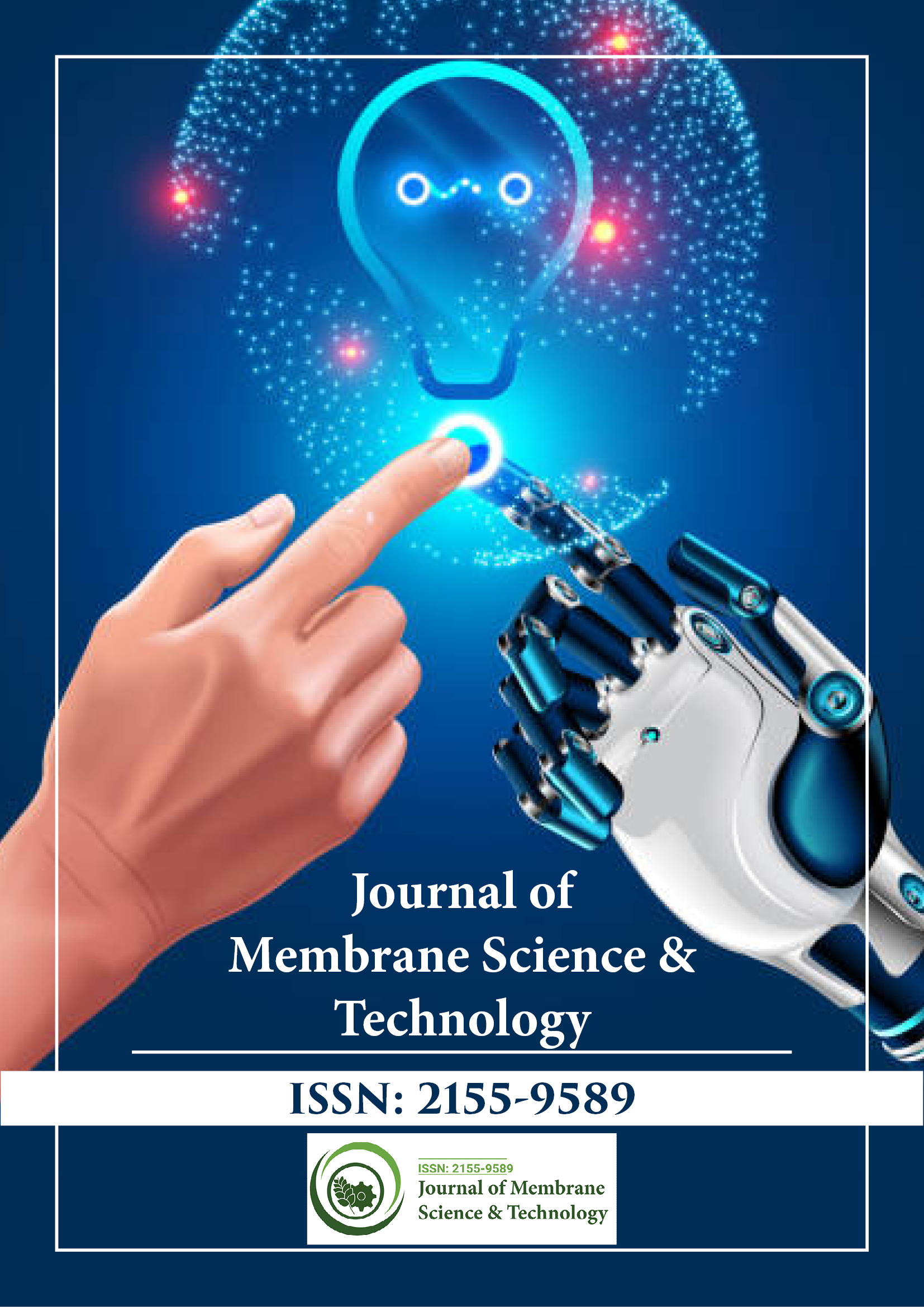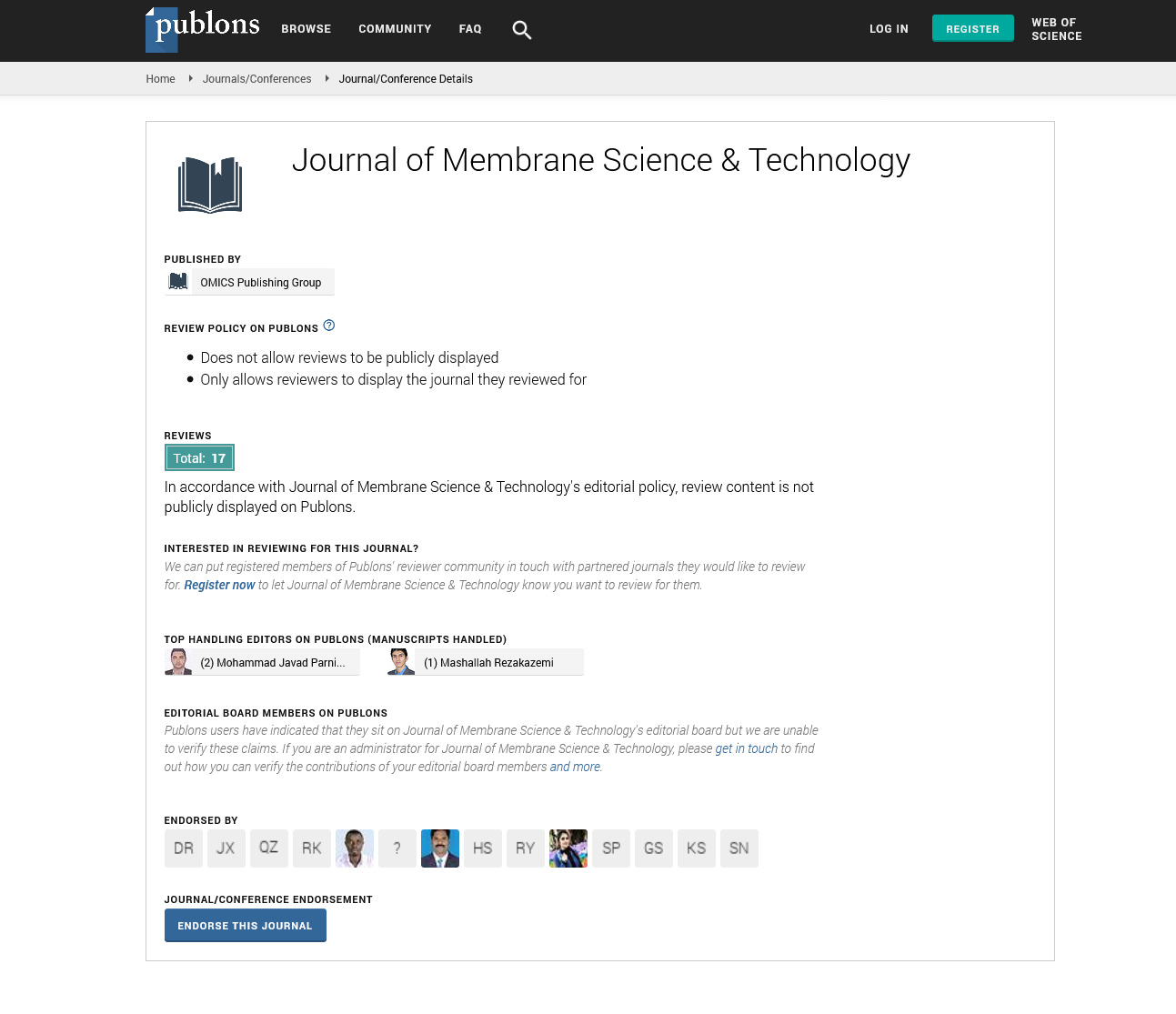Indexed In
- Open J Gate
- Genamics JournalSeek
- Ulrich's Periodicals Directory
- RefSeek
- Directory of Research Journal Indexing (DRJI)
- Hamdard University
- EBSCO A-Z
- OCLC- WorldCat
- Proquest Summons
- Scholarsteer
- Publons
- Geneva Foundation for Medical Education and Research
- Euro Pub
- Google Scholar
Useful Links
Share This Page
Journal Flyer

Open Access Journals
- Agri and Aquaculture
- Biochemistry
- Bioinformatics & Systems Biology
- Business & Management
- Chemistry
- Clinical Sciences
- Engineering
- Food & Nutrition
- General Science
- Genetics & Molecular Biology
- Immunology & Microbiology
- Medical Sciences
- Neuroscience & Psychology
- Nursing & Health Care
- Pharmaceutical Sciences
Abstract
Removal of Dissolved Organic Carbons and some Microorganisms from a Drinking Water Treatment Plant by a Novel Ag Dopped Thin Film Polyamide RO Membrane
Delia Teresa Sponza, Nefise Erdincmer
Silver nanoparticles can be incorporated into membranes as biocid to remove some microorganisms and dissolved organics from the drinking water. Many conventional water treatments, including filtration, sedimentation and coagulation were not effectively remove the dissolved solids and the microorganisms. In this study, a novel composite membrane namely Thin-Film Composite Reverse Osmosis (TFC-RO)/nano Ag Nanoparticules (NP) membrane was generated to remove some bacteria (Shigella, Escherichia coli, Vibrio, and Salmonella), viruses (Enterovirus and Rotaviruses), protozoans (Entamoeba, Giardia, and Cryptosporidium) and some toxic cyanobacteria (Microcystis, Gloeotrichia spp., Anabaena Synechocystis spp.) from the influent of the drinking water treatment plant. The effects of 3 percentage of Ag NP concentration on the removals of Soluble Chemical Oxygen Demand (sCOD), soluble dissolved suspanded solid matter and some organisms (bacteria, viruses, protozoan and toxic cyanobacteria) removals were investigated using RO- nano Ag membrane. The membrane surface was investigated in raw and polluted form after used in treatment of drinking water by performing SEM (Scanning Electron Microscope), XPS (X-ray Photoelectron Spectroscopy), TEM (Transmission Electron Microscopy) and FTIR (Fourier Transform Infrared Spectroscopy) analysis. The effects of different AgNO3: NaHB4 ratios on the yields of the the of sCOD, Dissolved Organic Carbon (DOC), Suspanded Solid (SS), Natural Organic Material (NOM) and organism removals at ambient conditions were studied. The effects of these ratios on the permeability of distilled water and drinking water was studied. The analysis results showed that a RO-Ag NP membrane with a AgNO3 to NaHB4 ratio of 1:4 was effectively remove the pollutants and some resistant bacteria, viruses, protozoa and cyanobacteria. RO membrane without Ag exhibited low removals compared to Ag doped one.
Published Date: 2021-09-04; Received Date: 2021-08-17

